“The Wild Robot” Writer/Director Chris Sanders on Kindness as a Survival Skill
With three Oscar nominations under his belt, animation auteur Chris Sanders knew a good story when he saw it the minute his daughter brought home Peter Brown’s children’s book “The Wild Robot” back in 2016. Sanders, who’d worked on The Lion King and later helmed How to Train Your Dragon, Lilo & Stitch, and The Croods, appreciated the tragi-comic tale centered on robot Roz (voiced in the film by Lupita Nyong’o) after she washes up on the shore of a remote island populated with wild animals.
Some four years later, Sanders learned that DreamWorks had acquired the book, and he signed on to spearhead the big-screen adaptation, which opened Friday to near-unanimous raves. “In some cases, we had to trim away characters, and in other places, I actually added some complications where I felt things were getting maybe a little too linear,” Sanders says, describing his light touch adaptation. “But it was always in service of Peter’s wonderful story.”
Speaking from his home in Los Angeles, Sanders discusses the emotive power of geese migration, Bambi, and the real-life inspiration behind The Wild Robot‘s enchanted island.
What was your biggest challenge in turning Peter Brown’s universally acclaimed children’s book into The Wild Robot movie?
Keeping the core of Peter’s story intact. When we had our first conversation, Peter revealed the thing he had on his mind when he was writing “The Wild Robot” was the idea that kindness could be a survival skill. I immediately wrote that down and thought, “Okay, this needs to be memorialized on screen.” I put that in the screenplay as a line that Fink the Fox says, and it comes directly from our very first conversation with Peter.
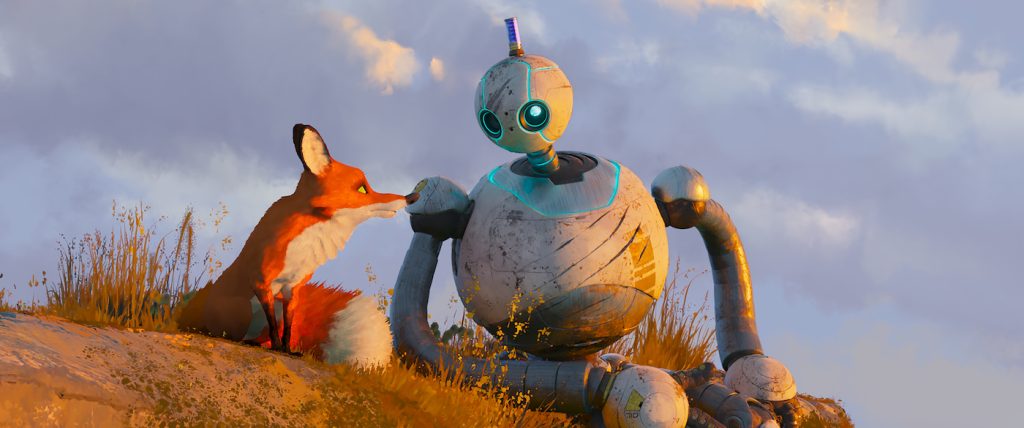
Yet the movie begins not with kindness but with feral, predatory chaos. When Roz first arrives, we see the animals giving her a hard time. Was it important to portray nature as an adversarial environment?
Absolutely. There had to be real life and death consequences for this story to work. For example, if Gosling Brightbill [voiced by Kit Connor] had stayed on the island, he wouldn’t have made it through the winter. He would starve. Peter’s book has some heavy themes, and we have to preserve and even magnify them for the big screen.
The voice actors infuse their animal characters with a ton of personality, but maybe the most surprising talent is Lupita NYong’o as the robotic Roz. She won an Oscar for 12 Years a Slave. A few weeks ago, she starred in a very serious post-apocalyptic drama, A Quiet Place: Day One. And now she’s an animated robot—how did that happen?
Our casting director, Christi Soper, suggested Lupita. Even though she wasn’t going to be on screen, Lupita took this as seriously as she would any role, deconstructing Roz to understand how her mind works. Roz is very intelligent, but there are serious gaps in what she knows, so she has a particular way of seeing things. Finding that amusing, charming angle for Roz was very much a collaboration, which progressed from a couple of Zoom calls to our in-person meetings in the recording studios.
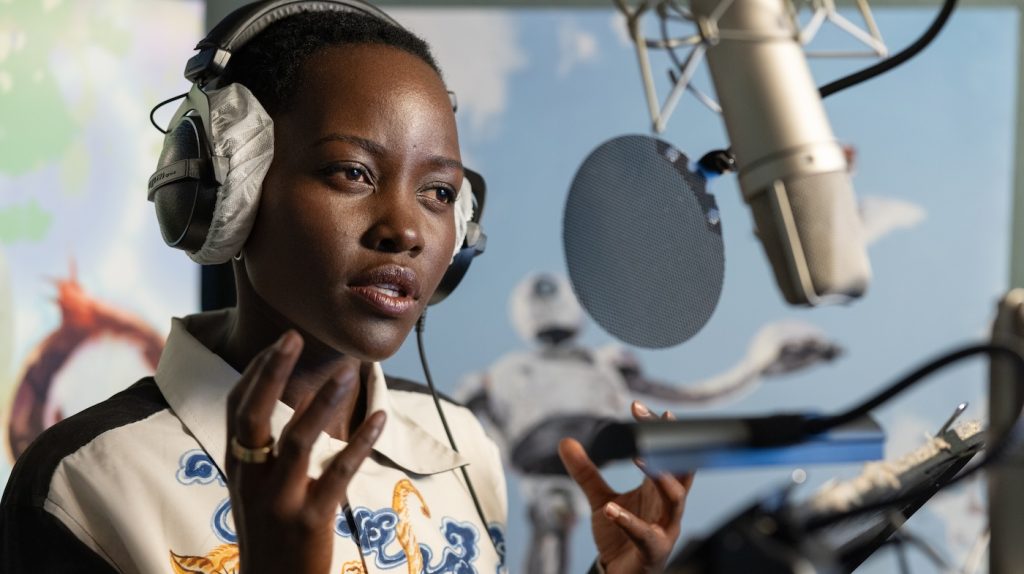
Lupita initially delivers her Roz lines in a stiff that we associate with digital assistants like Siri and Alexa. How did you two arrive at that tone?
Lupita was very much thinking about voices like Siri and Alexa when she created what we called an “engineered optimism.” I liken it to somebody who’s coming to a party, and they’re a little bit nervous, so their voice goes like this (switching to a high voice): “Hi, I’m Chris! How are you!” (back to regular voice). Lupita created this sound, which I daresay stressed her voice a little bit to create this upbeat, hopeful quality that Roz has right out of the box.
As the story progresses, Roz changes, and so does her voice.
Roz’s voice becomes more like Lupita’s, and the pattern of her speaking changes as well. At a certain point, Roz begins to use contractions, so there are very subtle things going on. It was fascinating to watch an actor of Lupita’s caliber shape her character.
The fox, the possums, the bear, and the geese are wildly entertaining. on top of that, you have this lush forest, which becomes a character unto itself. What real-life references inspired the look of this island?
We all felt the island would probably be on the northwest coast of North America, given the creatures. Our production designer, Raymond Zibach, looked at Olympia National Park [in Washington] to study the foliage, which is wet and has a lot of ferns. We painted those plants in the background.
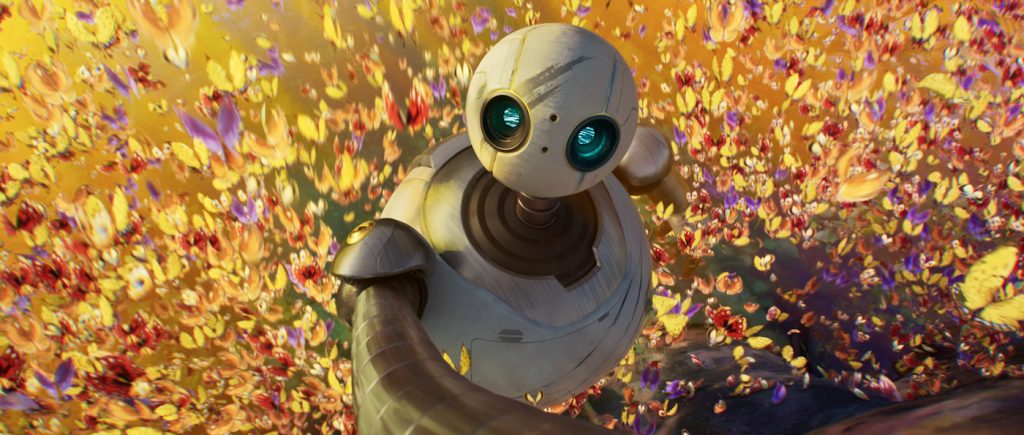
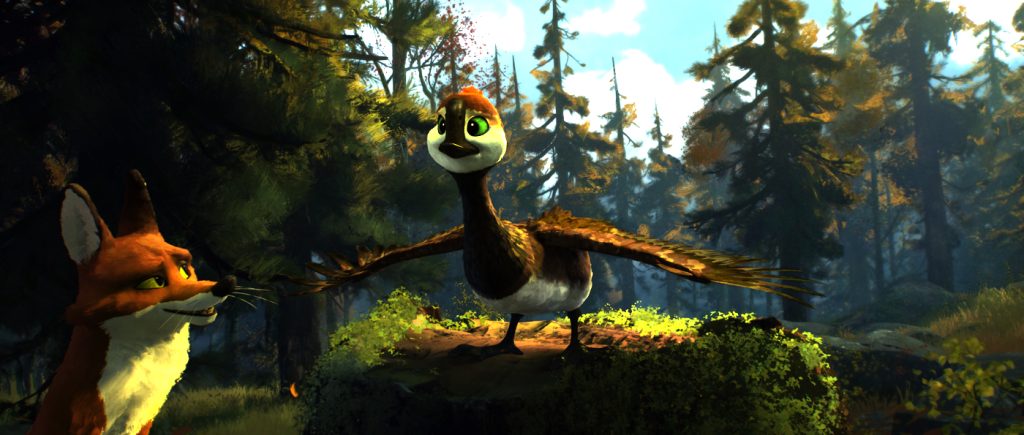
Your team’s rendering of this forest-island environment evokes a richness reminiscent of classic Disney movies like Bambi. What were you aiming for visually?
You said the magic words: All of us here are big fans of [Disney animator] Tyrus Wong’s style employed for Bambi. It’s one of the most immersive environments I’ve ever seen, and it shows what human beings can do when they paint environments. Of course, Hayao Miyazaki was a big inspiration with films like My Neighbor Totoro, where fantastical things come out of the forest. We aspired to get that same kind of exciting, whimsical vibe for The Wild Robot.
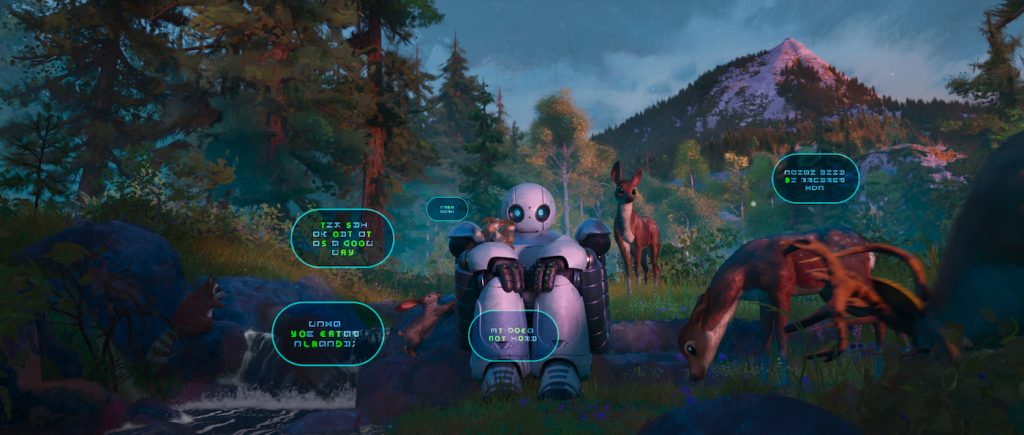
So how did you achieve that painterly look?
We fought very hard to create a technology that allowed us to actually paint these environments rather than covering [CGI] geometry in texture. We were able to create matte paintings, which made a huge impact on the visuals. Every sky is painted.
Just to be clear, when you say “painted” you mean…
We’re painting things digitally with a stylus but there’s nothing being generated by a computer. It’s an impressionistic style we adopted for this film, not unlike the washes they did for Bambi, where blades of grass are maybe just a brush stroke with a blob of color hovering above them. Not everything is razor-sharply described, if that’s a word — I just created a new word for your article! It’s not 100 percent described and the same thing with Wild Robot. If you look at our high, wide shots, the forest and the trees are not described in crazy detail on the ground so your eyes don’t get stuck looking there. But it still plays as believable.
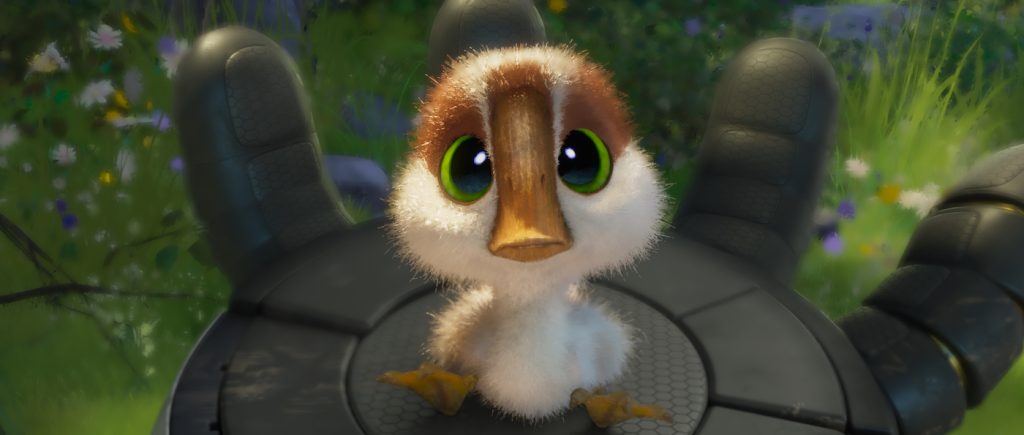
SPOILER ALERT
Midway through the movie, Roz says goodbye to Brightbill the Gosling, whom she’s raised from birth. It’s a very emotional seven-minute geese migration sequence complete with soaring music, the thrill of lift-off, the bittersweet farewell, the big sky. How did you put it all together?
I [story] boarded that section myself because I saw some things in my head that were very specific. If you raise a gosling, there’s built-in heartbreak at the end of that road because if you do a good job, it’s eventually going to fly away. Roz has been single minded on this goal of getting Brightbill into the air, so I was interested in showing how, when he takes off, everything catches up with her emotionally. At that moment, Roz does something very un-robotic and starts running because she’s desperate to see that gosling one last time. She’s literally running toward a cliff. It was interesting to show how the physical landscape mimics the emotional landscape.
Music underscores nearly every scene in this film. You must have collaborated closely with composer Kris Bowers?
Kris came on very early in the process. I’m a big believer that music is one of the heaviest lifters as far as emotions and story moments. In the script, I’d build zones where there is no talking so Kris doesn’t have to worry about ducking under or around a bunch of dialogue. For the migration sequence, I asked Kris to ignore the visuals and just write a great piece of music. I said “When you’re done, we’ll sweep in behind you and cut the visuals to match the music.”
The Wild Robot dramatizes this touching transformation of an AI entity into a sentient being. Did you and your team actually use AI to help make the movie?
No AI really came into this. The funny thing is, the advances we made engineering-wise to paint environments curiously allowed us to make a more hand-made, human-made film than previous films I’ve worked on in CG. This is a movie about a learning robot who’s probably running some version [of AI], but when Peter wrote his novel back in 2016, that was not a thing. It’s interesting to see how this conversation has risen just as we were finishing the film.
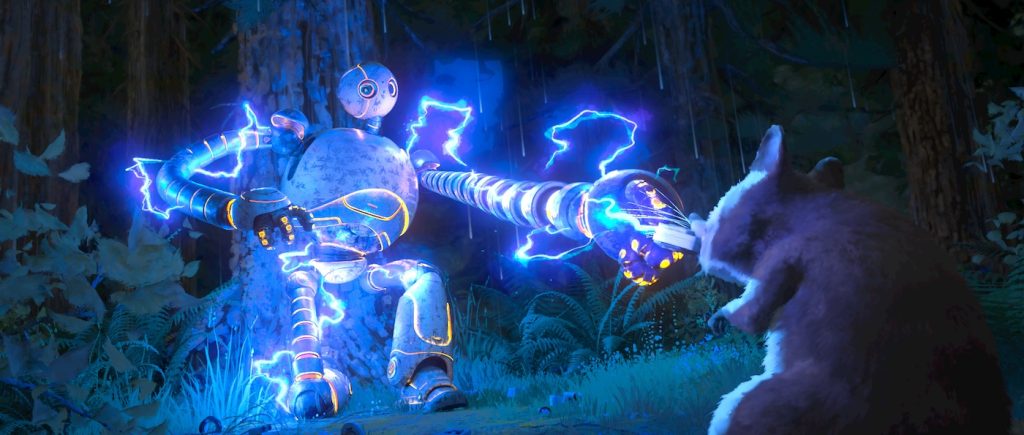
You started writing your Wild Robot script in 2020. After all these years, how does it feel to come out on the other side of this massive collaboration?
I’ve never worked on a production that ran so smoothly. Everyone on the crew, every animator, every effects artist, and every engineer exceeded what they needed to do, which makes me wonder if that’s because of the movie’s message – the idea of kindness. When our animators finished their characters, they’d ask, “Are there any more shots available for me?” They wanted it to go on. The level of devotion and love poured into The Wild Robot is, I think, evident on screen.
For more on Universal Pictures, Peacock, and Focus Features projects, check out these stories:
“Wicked” Casts a Spell and Causes Commotion in a Brand New Trailer
“Twisters” Sound Editors on Creating the Ferocious Voice of Six Distinct Tornadoes
Featured image: (from left) Roz (Lupita Nyong’o), Brightbill (Kit Connor) and Fink (Pedro Pascal) in DreamWorks Animation’s The Wild Robot, directed by Chris Sanders.



